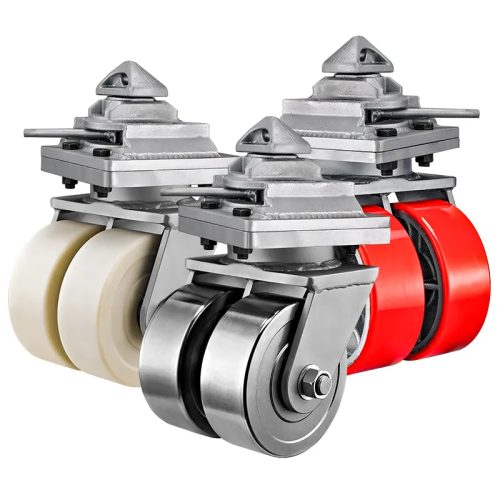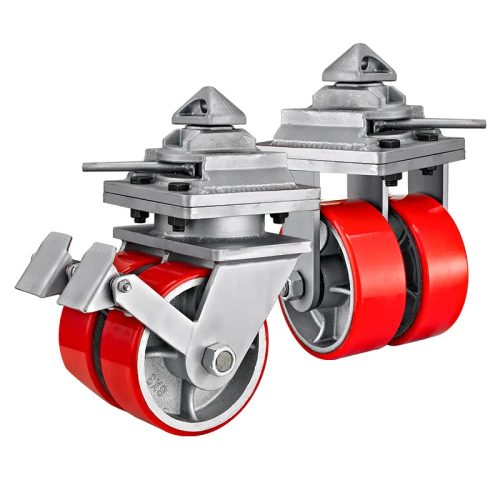Twin-wheel casters are versatile components with a wide range of industrial applications, playing a pivotal role in enhancing mobility, efficiency, and safety. In this article, we will delve into some real-world case studies and best practices for using twin-wheel casters in industrial settings, demonstrating their significance in various industries.
Case Study 1: Manufacturing and Assembly Lines
In manufacturing and assembly line environments, the need for smooth movement of heavy equipment and materials is paramount. Twin-wheel casters equipped with robust materials and precision bearings offer excellent load-bearing capabilities and maneuverability. Whether it’s transporting automotive components in a car assembly plant or moving heavy machinery in a steel fabrication facility, twin-wheel casters contribute to streamlined operations.
Best Practice 1: Choose twin-wheel casters with a high load capacity, ensuring they can handle the weight of the equipment or materials being transported. Regular maintenance is essential to prevent caster failure, as any disruptions in a production line can be costly.
Case Study 2: Medical Equipment
Hospitals and healthcare facilities rely on medical equipment that is both mobile and easy to control. Twin-wheel casters with exceptional maneuverability are essential for medical carts, hospital beds, and diagnostic machines. The ability to swivel and navigate through tight spaces while providing stability is a critical factor in the design of these casters.
Best Practice 2: Prioritize ergonomics and noise reduction in medical equipment applications. Quiet and smooth-rolling twin-wheel casters help create a more peaceful and patient-friendly environment.
Case Study 3: Warehousing and Distribution
In warehouses and distribution centers, the efficient movement of pallets, racks, and storage containers is essential for optimizing space and productivity. Twin-wheel casters, especially those equipped with locking mechanisms, allow for easy mobility and secure positioning. They are indispensable for maintaining an organized and efficient warehousing system.
Best Practice 3: Select twin-wheel casters with locking features to ensure stability when positioning storage equipment. Regularly inspect casters for damage or wear, as worn casters can lead to accidents and product damage.
Case Study 4: Laboratory and Cleanroom Environments
Laboratory and cleanroom settings demand precise control and cleanliness. Twin-wheel casters designed for use in these environments are typically made from non-contaminating materials and feature advanced directional control technology. They are used on mobile lab benches, equipment stands, and sensitive instruments that require stability and precision.
Best Practice 4: Prioritize the use of casters made from materials that meet cleanroom standards and are resistant to chemicals or corrosive substances. Implement strict cleaning and maintenance protocols to prevent contamination.
Case Study 5: Aerospace Industry
In the aerospace industry, precision and safety are paramount. Twin-wheel casters are used on aircraft maintenance platforms, engine stands, and heavy toolboxes. These casters must withstand the rigors of aircraft maintenance, providing stability, mobility, and durability.
Best Practice 5: Choose casters designed for aerospace applications with a focus on load capacity, corrosion resistance, and ease of maneuvering in confined spaces. Perform regular inspections and maintenance to ensure safety during aircraft maintenance procedures.
In conclusion, the industrial applications of twin-wheel casters are diverse and essential in various sectors. By selecting the right casters and adhering to best practices, industries can improve efficiency, safety, and overall performance. Twin-wheel casters have proven their worth in the field, showcasing their adaptability and contribution to industrial operations.


